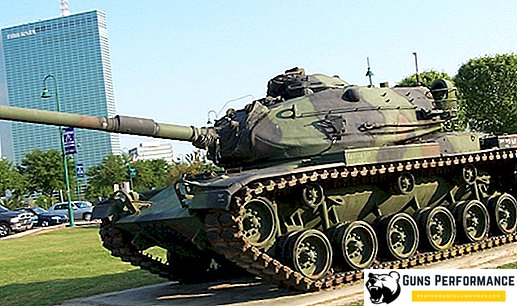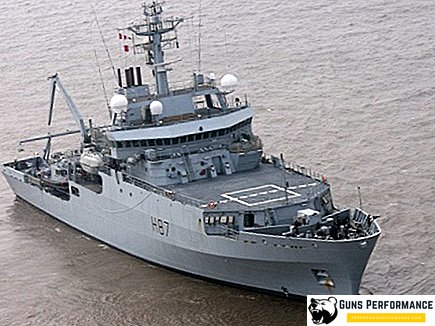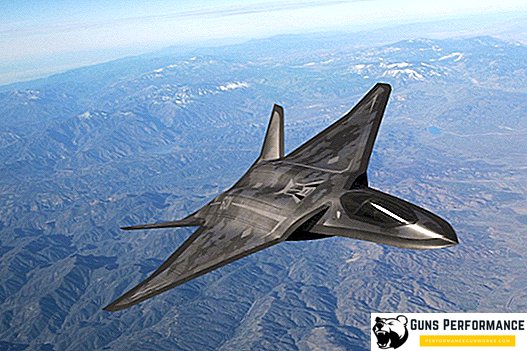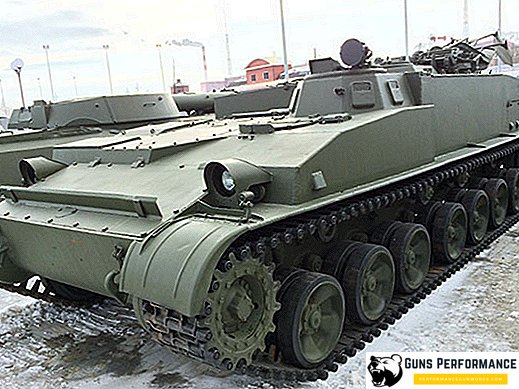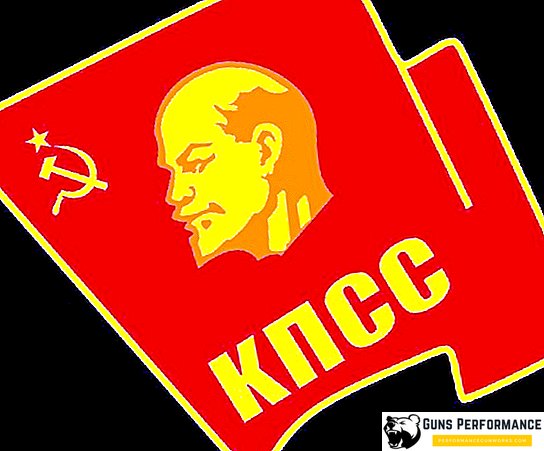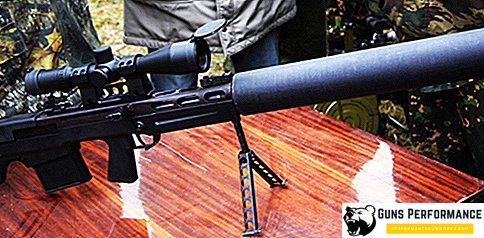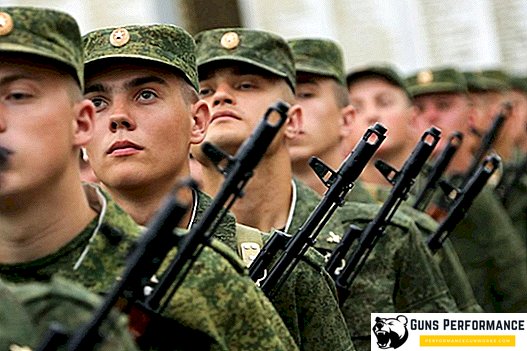The Su-35 is the most formidable Russian Air Force fighter currently in service. This powerful combat aircraft with two modern engines, is a thoroughly modernized version of the successful Soviet fighter Su-27. The new Su-35 aircraft is capable of developing enormous speed, rising to a great height, demonstrating aerobatics, while carrying a large payload. Excellent basic characteristics, coupled with advanced electronic equipment and weapons make the Su-35 an extremely dangerous enemy for any foreign fighter of our time. That is why the Air Force of the People’s Liberation Army of China is so eager to get a new Russian fighter with all its “stuffing”.

The history of the creation of the SU-35
Production of the installation batch of the Su-35 began in 2006. The beginning of the flight tests of the sample was scheduled for 2007, but the dates were postponed to 2008. The assembly of the first prototype of the Su-35 was completed at the KnAAPO named after Yu. A. Gagarin by summer 2007, after which the Russian su 35 fighter was presented to the public at the international MAKS-2007 air show.
The first flight of an experienced Su-35 fighter took place at the Gromov State Research Institute on February 19, 2008. The new aircraft was piloted by Sergei Bogdan, test pilot of the Russian Federation. On February 20, 2008, the su 35 fighter was presented to President Vladimir V. Putin when he visited the city of Zhukovsky.

In July 2008, the fighter performed the first demonstration flight in Zhukovsky. On October 2 of the same year, the second sample, which made 20 flights, took off from KnAAPO Komsomolsk-on-Amur airfield. For March 2009, 100 flights have already been made.
In 2010, the company "Sukhoi" completed the preliminary tests of the Su-35. The fighter has demonstrated excellent technical characteristics. May 3, 2011 made the first flight of a new serial Su-35S ("C" means "serial").

On December 25, 2012, the Ministry of Defense received six Su-35 fighters. In 2013, the Air Force received another 12 Su-35 fighter jets. Taking into account the consignment, the aircraft fleet of cars of this type amounted to 22 units.
In February 2014, the combat strength of the Russian Air Force was replenished with another 12 fighters. Until the end of 2018, the Ministry of Defense should receive another 50-60 of such aircraft.

Tasks of fighter SU-35
- Apply a preemptive strike against the air enemy, including the barely noticeable
- Attack land or sea targets without entering the air defense zone
- Use weapons by ground (sea) and airborne by radar information
- Participate in group activities on ground and air targets
- Fly at low altitudes, flying over and around obstacles
- Accompany aerial targets simultaneously in the rear hemisphere
- Perform combat missions under intentional interference
- Detect typical ground and air targets at a distance of up to 200 km, large air targets with image intensifier up to 400 km.

Tactical and technical characteristics of the SU-35
- Height -5.9 m
- Wing Span - 15.3 m
- The mass of the empty Su-35 - 19000 kg
- Take-off normal weight - 25300 kg
- Take-off maximum weight - 34,500 kg
- Fuel capacity in tanks - 11,500 kg
- Weight of combat load - 8000 kg
- Engine Type - TRDDF
- Engines - 2x117C
- Engine thrust - 14,500 kgf
- Maximum rate of climb - more than 280 m / s
- Maximum speed at an altitude of 11000 m - 2250 km / h
- Maximum speed - 1400 km / h at an altitude of 200 m
- Practical ceiling - 18000 m
- Flight range at full refueling on the ground at a speed of M = 0.7 - 1580 km
- Flight range at full refueling at high altitude with a cruising speed of 3,600 km
- Ferrying range with the use of 2khPTB-2000 - 4500 km
- Maximum operating overload - 9 g.
- Run length at full afterburner with a normal take-off weight - 400-450 m
- The length of the run during landing on the concrete strip using wheel brakes and a brake parachute and a normal landing weight of 650 m
- Crew - 1 person.

Armament of aircraft SU-35
- Aviation gun GSh-30-1
- Combat load - 8000 kg
- 12 knots suspension weapons
- Air-to-air missiles: РВВ-БД, Р-27Т, Р-27П, 6 × Р-27ЭР, 10 × РВВ-АЕ, 4 × Р-73
- Air-to-ground missiles: 6 × X-31, 2 × X-59M
- Precision munitions: X-25, 6 × X-29, 6 × KAB-500, S-25LD, KAB-1500
- Unguided ammunition: C-8, C-25 (NAR), bombs of various sizes and assignments up to 1500 kg.
Aviation SU-35
- Applies H035 Irbis, radar with built-in passive phased antenna array
- Target detection range on follow-up courses is 150 km
- Target detection range on a collision course is 350-400 km
- Detection and target designation: 30 air or 4 ground targets
- Simultaneous firing: no more than 8 missiles with an active homing head, no more than 2 missiles with a semi-active homing head
- At a distance of 80 km OLS can accompany 4 air targets
- IR Sensors - Rocket Attack Warning
- Armament allows the use of suspended EW containers.

Design features of the SU-35 fighter
- Fighter Su-35 has an aerodynamic integral layout. The Su-35 used aerodynamic improvements that were developed for the deck version of the Su-27K. The body of the aircraft is made using aluminum-lithium alloys and composite materials. Su-35 compared to the Su-27 has a reinforced landing gear, added external suspension nodes under the wing. The cabin is equipped with an ejection seat K-36 with an increased backrest angle.
- To accommodate a reinforced front support, the new avionics, refueling systems, engineers have developed a new fuselage head with side access hatches to the equipment and an increased radar radome radome. The new "head" of the fighter to maintain controllability and stability in the track channel required an increase in the rudder area and vertical tail. For mounting new equipment, the diameter and length of the tail fairing was increased, and the brake parachute was moved to the upper surface of the fuselage of the tail section in front of the fuel tank.
- Su-35 has a special conductive spraying the edges of the airframe and cockpit canopy, special materials are used to reduce the EPR.
- The Su-35 fighter uses two AL-41F1S two-circuit turbojet engines with a special controlled thrust vector in the same plane and an afterburner chamber. These engines are the “simplified” version of the AL-41F1 engine developed for the fifth generation aircraft. The AL-41F1S is distinguished by a reduced off-load and afterburner and the use of an electronic-mechanical control system. Afterburner reaches 14,500 kgf, in the afterburner mode it is 8800 kgf. The engine overhaul life is 1000 hours, the resource is 4000 hours. Engines allow to achieve supersonic speed without the use of afterburner.
- Su-35 uses a radar H035 Irbis, which provides target detection with EPR 3m² at a distance of up to 400 km. Additionally, OEIS and an optical-location station are used. The fighter has means of electronic warfare, moreover, it can be equipped with stations of group electronic protection.
- The cockpit is equipped with a holographic indicator on the windshield and two LCD displays, allowing to work in multi-screen mode.
- Su-35 is equipped with the latest weapons control system, which includes an optoelectronic system, a multifunctional radar, and a weapon control computer. The multimode interference-proof radar supports attack modes of ground targets, mapping of the earth's surface, allows you to find air targets at a distance of up to 400 km, and ground targets - up to 200 km.
- Armament Su-35 to date has no analogues in the breadth of the range used for action on sea, land and air targets. The Su-35 is capable of carrying up to 14 missiles at the outer nodes. Missile armament is installed on the eight wing points of the suspension, under the fuselage and under the engine nacelles.

Export supplies
At present, the Su-35 has not yet been sold abroad. However, it is priced at the PRC, which is very interested in the engines and onboard electronics of the fighter. The Chinese engine industry has advanced greatly, but still cannot fully meet current Air Force requests for making copies of the Soviet AL-31F engine, which fell into the hands of Chinese engineers 20 years ago.
The main risks of sales to China are reduced to unauthorized copying, as well as the reproduction of aircraft systems and components.


